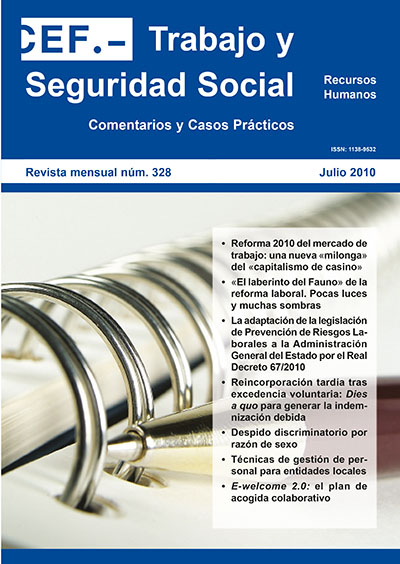2010 Market reform of work: a new «milonga» from «casino capitalism»
DOI:
https://doi.org/10.51302/rtss.2010.5269Keywords:
labor market, employment policies, economic crises, economic dismissals, private employment agencies, employment contractsAbstract
The Government has decided to introduce a labor reform, through the Royal Decree Law 10/2010, under pressure from financial markets, the European Union partners and the failure of Social Dialogue. This rule changes three institutions of labor law: the system of recruitment, dismissal and active employment policies. Although the Government tries to reflect changes in balance, so that not only reduce labor costs and increase the powers of the employer, to the detriment of the powers of workers and the public deficit, the truth is that reform-oriented changes introduced greater flexibility in managing labor.
The reform discussed here is not only partially, and often inconsistent, but provisional. He will be replaced shortly by a law that will probably change a number of aspects of royal decree law. However, the importance of certain legislative changes required a review of those arrested, providing not only an accurate map of the new laws, but also solutions to many practical problems it presents. Of course, without neglecting the critical approach, to the extent that the author of this paper argues that none of the measures they have provided will meet any of the two stated objectives: to create employment and in better quality, and increase the productivity of Spanish firms. From there we understand that we are to a large «milonga», to provide solutions that distract attention from the real issues and really effective solutions.


















